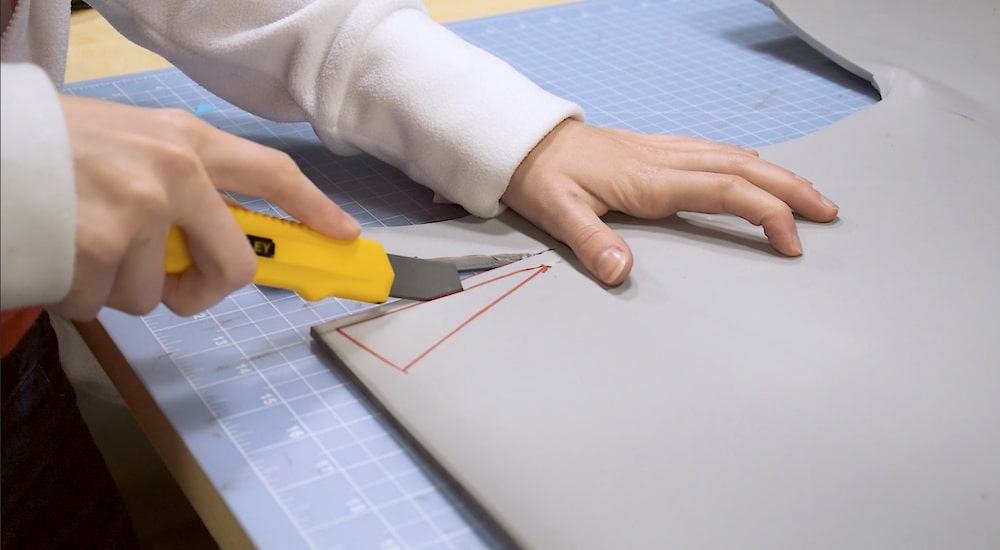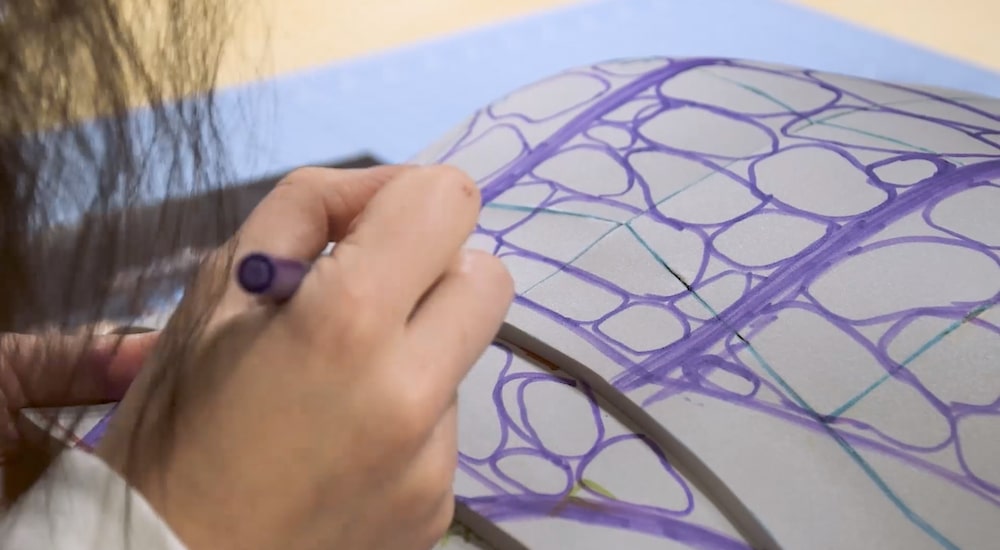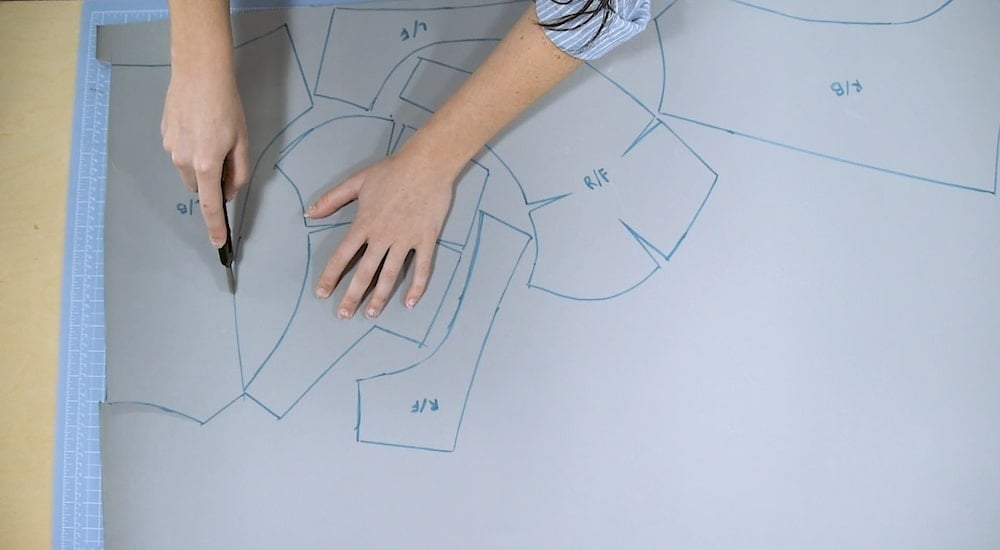Foam is a huge part of cosplay. It’s one of the materials that has enabled creators to continue building bigger, better, more ambitious cosplays over the past several years. It’s made armor building possible for those who who need an alternative to thermoplastics or metalworking, and it makes oversized props and characters light enough to actually carry and cosplay. But how much do you know about the different types of foam?
You’ve probably heard of EVA and craft foam, but there’s another type of foam that can be great for certain foamsmithing applications too, and it’s called L200. In this post, we’ll discuss cosplaying with L200 foam, when to use it, and the benefits and challenges you need to know before building with it.
Best Uses for L200 Foam in Cosplay
 L200 foam is actually a specific type of EVA foam. The difference is that L200 foam is a closed-cell foam that is less dense than regular floor mat EVA. L200 is actually more like craft foam except that it comes in much larger rolls and has different thicknesses to choose from. As far as applications go, you can use L200 for any piece or cosplay you’d use regularly EVA or craft foam for. L200 is perfect for big armor builds because it comes in much larger quantities that require a lot less time and effort to work with than EVA. L200 can be cut, heated, sealed, and painted just like EVA without as much prep work. L200 is also a good option for colorful armor.
L200 foam is actually a specific type of EVA foam. The difference is that L200 foam is a closed-cell foam that is less dense than regular floor mat EVA. L200 is actually more like craft foam except that it comes in much larger rolls and has different thicknesses to choose from. As far as applications go, you can use L200 for any piece or cosplay you’d use regularly EVA or craft foam for. L200 is perfect for big armor builds because it comes in much larger quantities that require a lot less time and effort to work with than EVA. L200 can be cut, heated, sealed, and painted just like EVA without as much prep work. L200 is also a good option for colorful armor.
In additional to large armor pieces, L200 is ideal for props, oversized or not. In many cases, you might find that you’re able to pattern and draw out your weapon as one singular piece of L200 instead of having to break your pattern down into pieces and assemble them. L200 can also be layered to make thicker layers if you happen to need and especially thick piece of foam.
L200 Foam Benefits
 There are several benefits to using L200 in your armor builds as opposed to other types of foam as well as other materials altogether. Here are some advantages of L200.
There are several benefits to using L200 in your armor builds as opposed to other types of foam as well as other materials altogether. Here are some advantages of L200.
- L200 has no textured side like floor mat EVA often does. This means that you don’t need to sand your L200 to remove texture before adhering or painting because you start with a flat, raw surface on both sides.
- L200 is sold in larger rolls and sheets than EVA and craft foam, often 48″ x 72″ in dimension. This is very convenient for cutting out large patterns and armor pieces without breaking your design down into parts to assemble or combining pieces of foam. It also means you might be able to use one piece for an entire cosplay without having to buy more.
- It’s less dense than floor mat EVA, making it more flexible.
- L200 is sold in a wide array of colors, meaning that you could choose not to seal and paint your armor if you’re able to purchase the right color. You could also choose the appropriate base color and then seal before painting only detail colors onto the base.
- You’ll also have the option to choose from different thicknesses, generally in this range: 1″, 3/4″, 1/2″, 1/4″, and 1/8″. You may be able to avoid layering multiple pieces of foam or cutting down thicker foam by choosing the correct thickness of L200 you need from the start.
- If you’re already familiar with EVA foamsmithing, there’s nothing new you need to learn in order to work with L200. The barrier to entry with L200 is relatively low for most cosplayers, and it also works with the adhesives you likely already have.
- L200 is less expensive than Worbla or other thermoplastics for armor projects.
L200 Foam Challenges
 However, there are also some challenges associated with L200 foam. Here’s what you need to know:
However, there are also some challenges associated with L200 foam. Here’s what you need to know:
- L200 is more expensive than most floor mat EVA and craft foams that you can get from craft stores, hardware stores, and cosplay retailers.
- L200 is also less easily accessible as opposed to standard EVA foams. You’ll likely have to order L200 from a specialty retailer online, which adds shipping costs and extra time onto your process.
- If you don’t use all of your L200 on one cosplay or you decide to order a lot of foam in advance, you’ll have to figure out a place to store these large rolls.
- Though you can heat form L200 to the shape you need, it doesn’t hold it’s shape quite as well as something like Worbla or a denser foam.
- L200 doesn’t tend to open up under a heat gun the same way that craft foam will.
The Right Foam for the Project
L200 is just one foam option for your big armor, prop, or character builds, and depending on your preferences, it may or may not be the right choice. While many cosplayers prefer the raw, refined qualities of L200 that make it ready to use without much preparation, others refer the convenience and accessibility of good, old fashioned garage mats for their armor. Each type of foam has its own pros and cons, so experimenting a little with different types is probably the best way to figure out what works best for you and your own process.